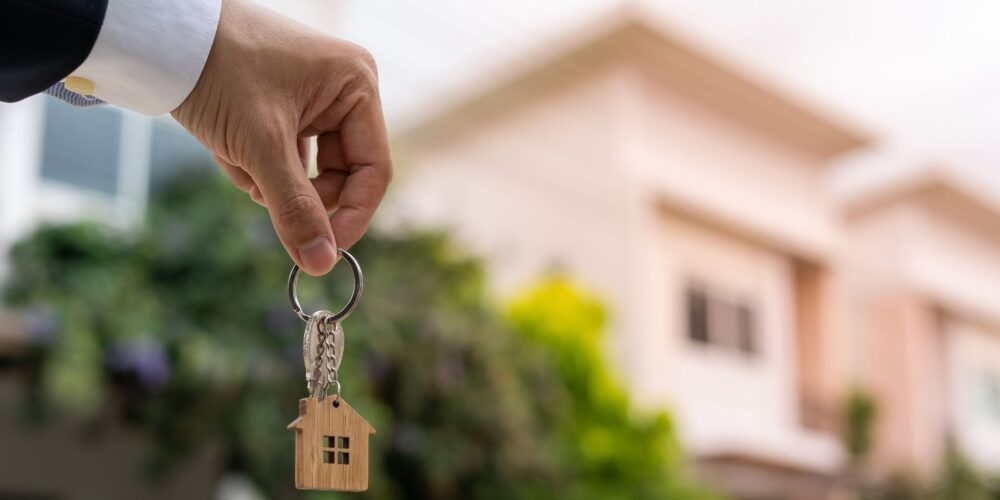Buying a property is considered as a good investment. Buy-to-let is a great way to boost your monthly income. You can make a tidy profit, as long as your tenants pay their rent regularly and the rent covers or exceeds your monthly mortgage re-payments. When the time comes to sell up, the return may be quite good too.
Yet, like any other investment, buy-to-let could carry some risks. Here are some key facts to consider when purchasing a buy-to-let property.
Buy-To-Let Mortgage
A mortgage for a buy-to-let home need to be specific for this type of purchase. It differs from a residential mortgage.
The process of applying for a buy-to-let mortgage is similar to any mortgage, and can be done either directly to a bank or building society, or via a mortgage broker.
The way they will work out how much you can borrow for a buy-to-let mortgage is considerately different compared to a residential one.
Instead of your salary, your lender will view the potential rental income of the property before deciding how much to lend to you. They then will consider your personal income in addition to this.
Most banks or building societies will expect your rental income to equal, at least, ALL of your monthly mortgage re-payments and a little more. This is known as ‘rental cover’. For example, your mortgage payments each month is £700. Your rental income should be about £900 a month, or slightly more.
This financial space works as reassurance for your lender that you will be able to pay your mortgage even when the home is empty between tenants.
The majority of buy-to-let mortgages are taken out on an interest-only basis. That means that each month you will be paying the interest on your mortgage rather than repaying the actual loan itself. With the interest-only mortgage, you will have to repay the full amount, either from savings or by selling the property, at the end of the term.
Like any mortgage, to get a buy-to-rent one requires a deposit. Most lenders expect at least 25%. But the cheapest mortgage deals usually require a 40% deposit or more.
Some lenders might consider a smaller deposit of 5%. But, then you are likely to pay higher fees and interest on a higher loan-to-value mortgage.
Mortgages with low interest rates are likely to come with hefty upfront fees. A fixed-rate mortgage could cost you thousands to secure in fees. It’s important to weigh up the interest rate against any fees over the long term. In some cases, a higher interest rate might actually work out cheaper.
Your Responsibilities as a Landlord
Becoming a landlord comes with certain legal responsibilities. Here are some key factors. The full list, as well as all relevant paperwork, can be found on the Government website.
A tenancy contract should be in place for the people who rent from you. They also should know that you are keeping their deposit safe.
The most popular tenancy contract is an Assured Shorthold Tenancy (AST). This type of contract lasts for a set period, usually six or twelve months.
An AST includes information about how much your renters must pay in rent during that time, how long the tenancy lasts and who is responsible for repairs.
It should also include details about their deposit protection scheme, when rent can be increased and notice period for eviction.
Renters have a legal right to live in your property for a fixed duration, or a rolling term.
There are two types of government-backed deposit schemes, insurance and custodial. Under the insurance scheme, the landlord or agent retains the deposit and pays interest to the insurer. They are available through the Deposit Protection Service, MyDeposits and Tenancy Deposit Scheme.
The custodial is when the deposit is paid directly into the scheme and is free-of-charge to use. Each scheme comes with an independent resolution service to iron out problems between landlords and tenants should they arise.
Other Responsibilities as a Landlord
As a landlord, you’re legally responsible for making sure the people who rent your home have the right to rent in the UK:
- Making the property safe for tenants to live in
- Dealing with repairs to the property’s structure and exterior
- Maintaining heating and water systems
- Making sure furniture meets fire safety regulations
- Ensuring that the gas and electrics are safe
Tax Implications Of Becoming A Landlord
There are some tax implications when you buy-to-let that should be considered before making a decision to become a landlord.
Tax on your rental income – the rent you receive will be taxed at your relevant tax band. Bear in mind that it could push you into a higher tax bracket. To reduce this tax, you can deduct some costs against the amount of tax you pay. More information about the deductible costs can be found on the Government website.
Relief on mortgage interest is capped for all landlords at the basic rate of 20%, regardless of whether you are a higher rate (40%) or additional rate (45%) taxpayer.
Capital Gains Tax is paid when you come to sell the property on any increase in value, in other words, on your profit. CGT is paid at 18% or 28% depending on your tax bracket.
You do have allowances, though. For the 2021/2022 tax year, the first £12,300 profit is CGT-free. For couples with joint assets, this doubles to £24,600.
You can also offset the cost of stamp duty and solicitors and estate agents’ fees against your CGT bill.
Stamp Duty applies to all investment property of over £40,000. That’s lower than the £125,000 starting threshold for residential homes.
The 3% stamp duty is charged on the entire property price, not just the value over a certain tax band.
Download Houso App today to browse buy-to-let properties for Android or Apple devices.

